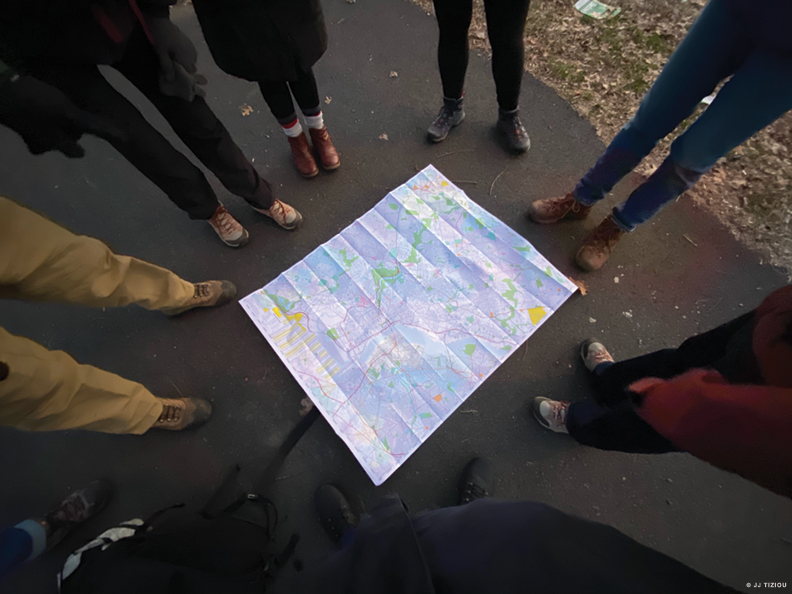
Walking the perimeter of Philadelphia.
BY JJ TIZIOU | Photography by JJ Tiziou and Liana Brent
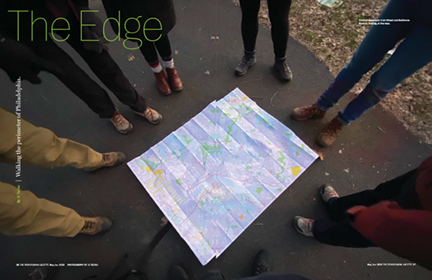
As I get ready to walk out of Philadelphia International Airport, I ask myself again why I’m doing this. Leaving the airport on foot, as a pedestrian, is a strange enough thing to do. Yet here I am, accompanied by 16 companions who’ve elected to join me on the last leg of my fifth annual pilgrimage walk around the perimeter of Philadelphia. The final stretch involves making an unconventional exit from the airport, edging along highways before diving into the sanctuary of the Heinz Wildlife Refuge. But much has been unconventional about this adventure.
Walk Around Philadelphia emerged from an artist residency collaboration with my fellow walkers Adrienne Mackey, Ann de Forest, and Sam Wend. A year later, in the aftermath of my father’s death, I did it again on my own. The following years, I completed some parts solo, some with a friend, and others with a small group. It has become a personal ritual that has also captured the imagination of others. In 2020, I opened the invitation a little bit more broadly, hence that big group striding out of the airport.
Walking around Philadelphia takes me five and a half days, covering about 100 miles. Each year I’ve done it in mid-February, always starting at 61st Street and Baltimore Avenue in Southwest Philly, always going clockwise. Each time is different, with new adventures, companions, discoveries, challenges, and ever-changing weather.
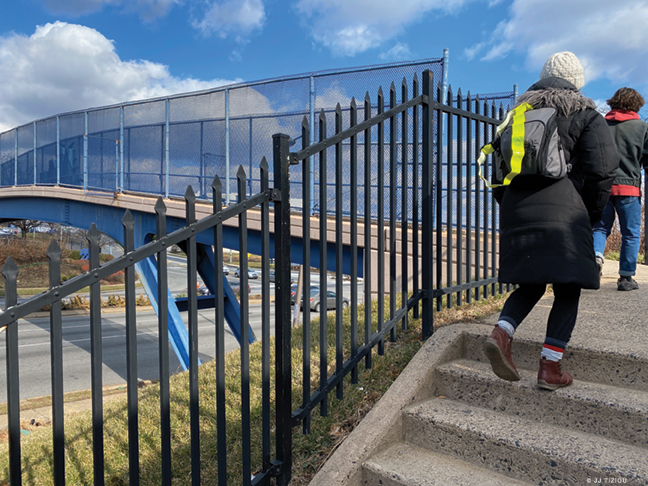
Day One begins in the woods, following a trail in Cobbs Creek Park where the western edge of the city is defined by the natural border of a stream. The first of many astonishing contrasts comes when we emerge suddenly onto the back end of a golf course, abruptly encountering the sudden roar of cars on City Avenue. This long stretch of strip mall is clearly a line drawn by a cartographer—but then we cross a bridge towards Manayunk and find ourselves following another natural border: the Schuylkill River, which leads us toward the city’s northwestern edge.
The operating principles of this walk are straightforward. Start somewhere on the city’s edge. Stay as close to the perimeter as safety permits. Don’t break in anywhere, or blatantly trespass, but explore with a spirit of adventure, open to paths that might not generally be taken. When obstacles arise—and they will—go around them. (We call this the “Roomba Rule,” bumping our way around obstacles like the little robotic vacuum cleaner.) As dusk approaches, find the nearest spot where you can take public transit home. The next morning, resume from where you left off. Repeat until you’ve come right back to the beginning, changed by what you’ve experienced along the way.
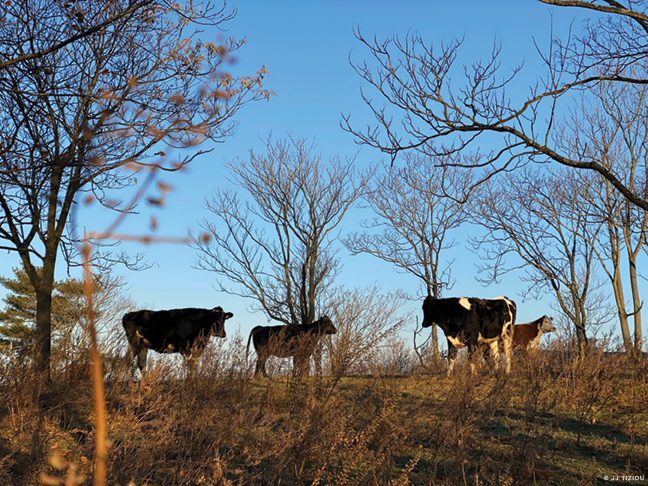
Day Two is a zigzag of straight roads, leading us northeast from the river towards Chestnut Hill, then southeast along Cheltenham Avenue all the way to Tookany Creek Park. From there, the border runs northeast again, alongside a rail track towards Fox Chase. But the first part of our morning takes us up a steep wooded hill behind the Schuylkill Center for Environmental Education and Manatawna Farms. This is wild, unkempt space, mixed in with fields and cows, yet somehow this too is Philadelphia. Later in the day it’s a strip mall, and then a park. Also Philadelphia.
There’s something special about experiencing the city by focusing on its outer edges. One revelation of our first year was how center-centric our view of the city had been. We’d catch a glimpse of the skyline in the distance and say, “Look, there’s Philadelphia!” Then we’d have to correct ourselves: “This, right here at our feet and to our right, is Philadelphia. And everything to our left is Not-Philadelphia.”
As someone who’s been well established in the city for more than half a lifetime, I thought I “knew” Philly. But the walk provides a humbling perspective on this vast and complex city. Now that I’m intimately familiar with its edge, the whole of Philadelphia feels like so much more of a mystery.
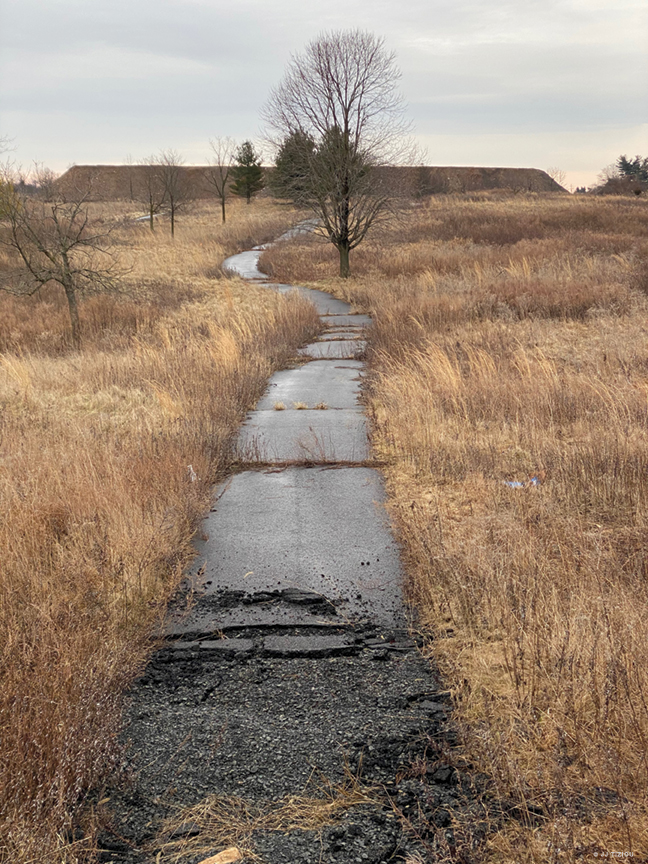
The forecast for Day Three called for cold and constant rain—the kind of prediction that might inspire one to stay at home. But I knew from the first year that the walk truly bears out the proverb that “there is no bad weather, only inappropriate clothing.” When you set out in the spirit of pilgrimage, with a spirit of curiosity open to discovery, you can bring joy to most any challenge and find beauty around every corner.
There’s a spiritual metaphor in this for me. In these turbulent and challenging times, we might wish that the world were other than it is—but I find it more helpful to focus on how we choose to respond to it. What values and virtues do we need to cultivate in order to best participate in whatever the world will bring us next?
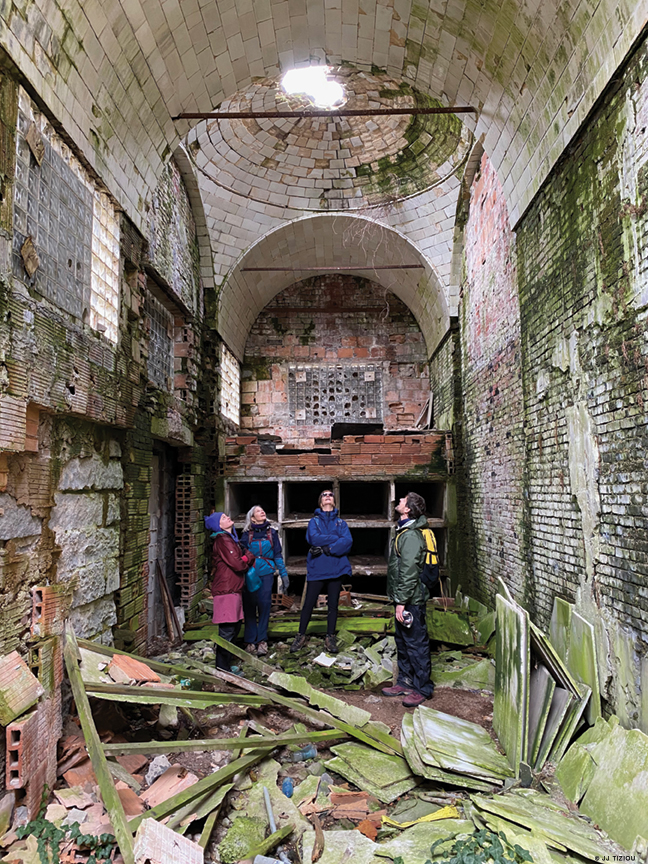
And so we persevere, with a bushwhacking adventure, as the northeastern border of the city traces the bramble-choked banks of Poquessing Creek. But to get there we first follow roads, stumble into an adventurous detour through a new housing development, and into some vacant industrial lands. One of the great surprises of the day is a giant crypt in a cemetery whose door swings open to reveal a gorgeous crumbling wreck half-overgrown by nature. We see both things along the walk: new things being built up, and old things being reclaimed by the earth. The afternoon drizzle intensifies as we wind our way through paths in the creek bed below the Philadelphia Mills mall, and it is properly dark and rainy by the end of this leg, but we are all in great spirits.
This sets us up for a spectacular early morning start to Day Four, with the long regional rail ride back to Torresdale timed to catch sunrise at Glen Foerd, a strange palace of a property on the northeastern corner of the city where Poquessing Creek meets the Delaware River. This day is a straight shot down the river’s edge, but not without its adventures. Interspersed between gorgeous, newly expanded segments of the Delaware River Trail are a shipyard, a chemical plant, abandoned boats, a scrap metal recycling facility, and of course the prisons.
Questions of privilege hit home for me again here, as I know several people who’ve made the journey from Southwest Philly to these carceral facilities by the more traditional route of the school-to-prison pipeline. And here I am having accomplished this journey via the more roundabout and far more pleasant experience of a grant-funded artist residency, and then by annually continuing a thing that can easily feel like a self-indulgent vanity project.
There’s an irony here. At its core, Walk Around Philadelphia is about the most basic human activity: walking in public space. Circumnavigating the city should be accessible to most anyone physically capable of it—but actually doing it requires a significant amount of privilege, and I wonder about how to make this experience one that more diverse participants can partake in.
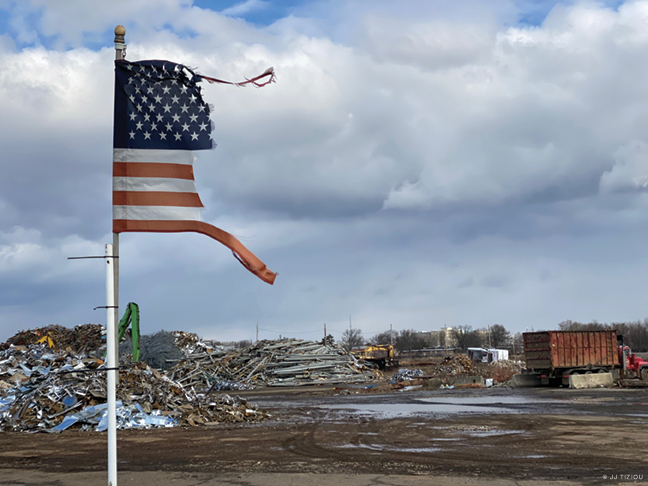
It’s a long trek down the Delaware, and by the time we reach Penn’s Landing, suddenly feeling so close to more familiar everyday territory, we’re exhausted and our feet hurt. Nevertheless, we push on all the way to Pier 68 by the shopping plaza in South Philly.
Day Five starts off with another glorious sunrise over the Delaware, this time more frigid: It’s 16 degrees when we set out. Adrienne, one of my original companions, joins us (fellow perimeter-walker Ann has been along since Day One) and it’s a joyous reunion. It’s a gift to spend all day walking with friends old and new. Walks open up a special and unique space for conversation. It allows for a certain fluidity, leaves room for silences that feel comfortable, creates possibility for deeper connection. Ever since the first walk, I’ve started shaping more of my meetings and social activities around walking.
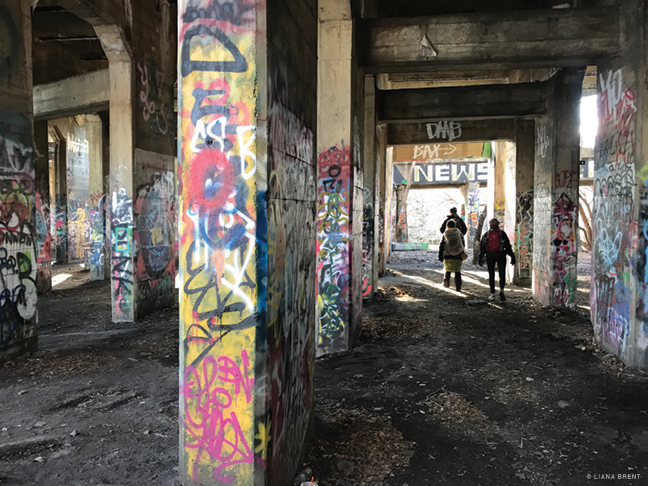
The next stretch is industrial, past shipyards and into the Navy Yard. A highlight of this day is crossing the Platt Bridge. I’m used to driving over it when going to the airport, but it’s surreal to cross it on foot. To either side lies a vast realm of oil refinery infrastructure, and visible through the bridge’s open grating is a steep drop to the Schuylkill River. We could call it quits at the airport, since technically only a fraction of it lies within the city, and we can’t quite follow the perimeter directly across the runways, but a spirit of completionism leads us to go the long way around the airport, on what is called Hog Island.
These long stretches can get monotonous. This is where the feet really begin to hurt. But there are still sensations to register and discoveries to be made: a jet landing just overhead, a deer carcass just underfoot, the remnants of a campfire in a hidden spot by the river’s edge. After all that, it’s a wild contrast to end our day at the airport’s international departures terminal.
And once again I find myself in the home stretch, for what I call Day 5.5 because the last segment is shorter than the others. Knowing that such a large group is joining for the last leg, I’m a little bit anxious: How will I keep them all safe, and will the size of the group detract from the experience? Part of me wants to be doing this walk alone as my personal pilgrimage, part of me loves sharing the experience with others and wants to facilitate small groups going out and doing it on their own, and part of me has a great time leading this motley procession on what might be the most unconventional tour of Philly ever given. And it works out splendidly, with everyone enjoying the experience as we navigate the edge of a toxic Superfund site, discover where all the old rusting dumpsters end up, wander beautiful creek beds, and have a joyous reunion with two more walkers who intercept us just ahead of Mt. Moriah Cemetery.
As our group cheerfully makes it back to Baltimore Avenue, I relish the ways in which this project creates new opportunities for rich connection between participants who spend all day walking, talking, navigating obstacles, and coming to new understandings of the city together.
What would it be like if we matched a city councilperson, a citizen just returning from incarceration, a historian, and a plumber and sent them off to explore the city’s edge together? Could this experience of discovery, and the conversation and connections that come through it, be used as an experience for civic groups? I’m not sure where this project will go next, but I do know that it will take me around the city a few more times, God willing. If you’d like to join me, save the date for February 2021.
Jacques-Jean “JJ” Tiziou C’02 is a visual artist and community organizer. His 85,000-square-foot How Philly Moves mural at PHL International Airport was recognized as one of the nation’s best public art projects by Americans for the Arts. You can find more of his work at www.jjtiziou.net.

